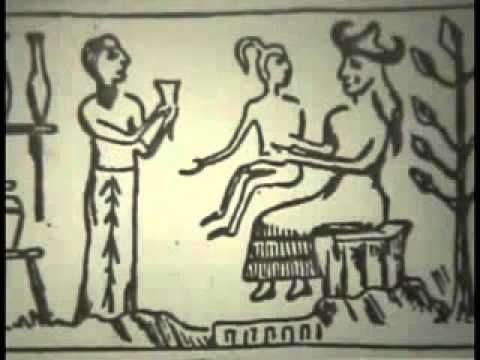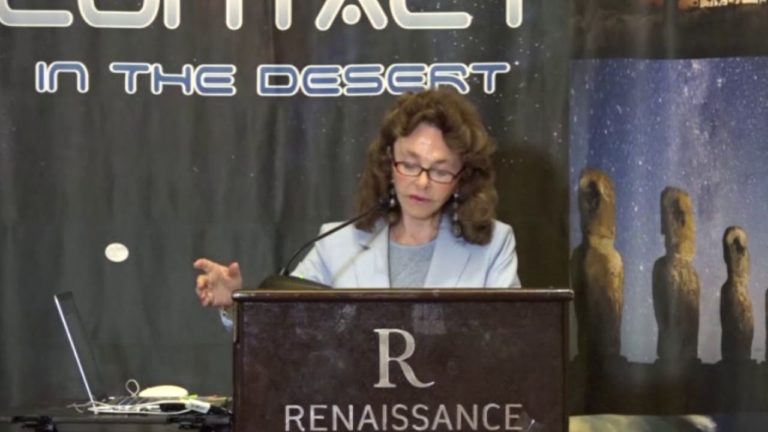
What is ufology?

Ufology is the study of reports, visual records, physical evidence, and other phenomena related to unidentified flying objects (UFO). UFO reports have been subject to various investigations over the years by governments, independent groups, and scientists. However, ufology as a field has not been embraced by academia and is considered a pseudoscience by the scientific community.
Etymology
 The term derives from UFO, which is pronounced as an acronym, and the suffix -logy, which comes from the Ancient Greek λογία (logiā). An early appearance of this term in print can be found in the article “An Introduction to Ufology” by Ivan T. Sanderson, found in Fantastic Universe magazine’s February 1957 issue (Vol. 7, No. 2), which closes with this direct plea: “What we need, in fact, is the immediate establishment of a respectable new science named Ufology.” Another early use of the word was in a 1958 speech given at the opening of The Planetary Center, a UFO research organization near Detroit, Michigan. Another early use, according to the Oxford English Dictionary, one of the first documented uses of the word ufology can be found in the Times Literary Supplement from January 23, 1959, in which it writes, “The articles, reports, and bureaucratic studies which have been written about this perplexing visitant constitute ‘ufology’.” This article was printed eight years after Edward J. Ruppelt of the United States Air Force (USAF) coined the word UFO in 1951.
The term derives from UFO, which is pronounced as an acronym, and the suffix -logy, which comes from the Ancient Greek λογία (logiā). An early appearance of this term in print can be found in the article “An Introduction to Ufology” by Ivan T. Sanderson, found in Fantastic Universe magazine’s February 1957 issue (Vol. 7, No. 2), which closes with this direct plea: “What we need, in fact, is the immediate establishment of a respectable new science named Ufology.” Another early use of the word was in a 1958 speech given at the opening of The Planetary Center, a UFO research organization near Detroit, Michigan. Another early use, according to the Oxford English Dictionary, one of the first documented uses of the word ufology can be found in the Times Literary Supplement from January 23, 1959, in which it writes, “The articles, reports, and bureaucratic studies which have been written about this perplexing visitant constitute ‘ufology’.” This article was printed eight years after Edward J. Ruppelt of the United States Air Force (USAF) coined the word UFO in 1951.
Historical background
A Swedish Air Force officer searches for a “ghost rocket” in Lake Kölmjärv, Norrland, Sweden, in July 1946.
The modern UFO mythology has three traceable roots: the late 19th century “mystery airships” reported in the newspapers of the western United States, “foo fighters” reported by Allied airmen during World War II, and the Kenneth Arnold “flying saucer” sighting near Mt. Rainier, Washington on June 24, 1947. UFO reports between “The Great Airship Wave” and the Arnold sighting were limited in number compared to the post-war period: notable cases include reports of “ghost fliers” in Europe and North America during the 1930s and the numerous reports of “ghost rockets” in Scandinavia (mostly Sweden) from May to December 1946. Media hype in the late 1940s and early 1950s following the Arnold sighting brought the concept of flying saucers to the public audience.
 As the public’s preoccupation in UFOs grew, along with the number of reported sightings, the United States military began to take notice of the phenomenon. The UFO explosion of the early post-war era coincides with the escalation of the Cold War and the Korean War. The U.S. military feared that secret aircraft of the Soviet Union, possibly developed from captured German technology, were behind the reported sightings. If correct, the craft causing the sightings were thus of importance to national security and in need of systematic investigation. By 1952, however, the official US government interest in UFOs began to fade as the USAF projects Sign and Grudge concluded, along with the CIA’s Robertson Panel that UFO reports indicated no direct threat to national security. The government’s official research into UFOs ended with the publication of the Condon Committee report in 1969, which concluded that the study of UFOs in the previous 21 years had achieved little, if anything, and that further extensive study of UFO sightings was unwarranted. It also recommended the termination of the USAF special unit Project Blue Book.
As the public’s preoccupation in UFOs grew, along with the number of reported sightings, the United States military began to take notice of the phenomenon. The UFO explosion of the early post-war era coincides with the escalation of the Cold War and the Korean War. The U.S. military feared that secret aircraft of the Soviet Union, possibly developed from captured German technology, were behind the reported sightings. If correct, the craft causing the sightings were thus of importance to national security and in need of systematic investigation. By 1952, however, the official US government interest in UFOs began to fade as the USAF projects Sign and Grudge concluded, along with the CIA’s Robertson Panel that UFO reports indicated no direct threat to national security. The government’s official research into UFOs ended with the publication of the Condon Committee report in 1969, which concluded that the study of UFOs in the previous 21 years had achieved little, if anything, and that further extensive study of UFO sightings was unwarranted. It also recommended the termination of the USAF special unit Project Blue Book.
As the U.S. government ceased officially studying UFO sightings, the same became true for most governments of the world. A notable exception is France, which still maintains the GEIPAN, formerly known as GEPAN (1977–1988) and SEPRA (1988–2004), a unit under the French Space Agency CNES. During the Cold War, British, Canadian, Danish, Italian, and Swedish governments have each collected reports of UFO sightings. Britain’s Ministry of Defence ceased accepting any new reports as of 2010.
Status as a field
Ufology has generally not been embraced by academia as a scientific field of study, even though UFOs were, during the
late 1940s and early 1950s, the subject of large-scale scientific studies. The lack of acceptance of ufology by academia as a field of study means that people can claim to be “UFO researchers”, without the sorts of scientific consensus building and, in many cases peer review, that otherwise shape and influence scientific paradigms. Even among scientifically inclined UFO research efforts, data collecting is often done by amateur investigators.
Famous mainstream scientists who have shown interest in the UFO phenomenon include Stanford physicist Peter A. Sturrock, astronomer J. Allen Hynek, computer scientist and astronomer Jacques F. Vallée, and University of Arizona meteorologist James E. McDonald.
As a pseudoscience
Ufology is characterized by scientific criticism as a partial or total pseudoscience, a characterization which many ufologists reject. Pseudoscience is a term that classifies studies that are claimed to exemplify the methods and principles of science, but that do not adhere to an appropriate scientific method, lack supporting evidence, plausibility, falsifiability, or otherwise lack scientific status.
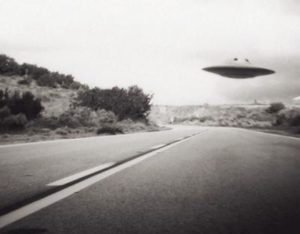 Gregory Feist, an academic psychologist, proposes that ufology can be categorized as a pseudoscience because its adherents claim it to be a science while the scientific community denies that it is, and because the field lacks a cumulative scientific progress; ufology has not, in his view, advanced since the 1950s. Rachel Cooper, a philosopher of science and medicine, states that the fundamental problem in ufology is not the lack of scientific method, as many ufologists have striven to meet standards of scientific acceptability, but rather the fact that the assumptions on which the research is often based are considered highly speculative.
Gregory Feist, an academic psychologist, proposes that ufology can be categorized as a pseudoscience because its adherents claim it to be a science while the scientific community denies that it is, and because the field lacks a cumulative scientific progress; ufology has not, in his view, advanced since the 1950s. Rachel Cooper, a philosopher of science and medicine, states that the fundamental problem in ufology is not the lack of scientific method, as many ufologists have striven to meet standards of scientific acceptability, but rather the fact that the assumptions on which the research is often based are considered highly speculative.
Stanton Friedman considers the general attitude of mainstream academics as arrogant and dismissive, or bound to a rigid worldview that disallows any evidence contrary to previously held notions. Denzler states that the fear of ridicule and a loss of status has prevented scientists from publicly pursuing an interest in UFOs. J. Allen Hynek also commented, “Ridicule is not part of the scientific method and people should not be taught that it is.” Hynek said of the frequent dismissal of UFO reports by astronomers that the critics knew little about the sightings, and should thus not be taken seriously. Peter A. Sturrock suggests that a lack of funding is a major factor in the institutional lack of interest in UFOs.
Methodological issues
Scientific UFO research suffers from the fact that the phenomena under observation do not usually make predictable appearances at a time and place convenient for the researcher. Ufologist Diana Palmer Hoyt argues,
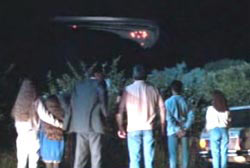 The UFO problem seems to bear a closer resemblance to problems in meteorology than in physics. The phenomena are observed, occur episodically, are not reproducible, and in large part, are identified by statistical gathering of data for possible organization into patterns. They are not experiments that can be replicated at will at the laboratory bench under controlled conditions.
The UFO problem seems to bear a closer resemblance to problems in meteorology than in physics. The phenomena are observed, occur episodically, are not reproducible, and in large part, are identified by statistical gathering of data for possible organization into patterns. They are not experiments that can be replicated at will at the laboratory bench under controlled conditions.
On the other hand, skeptics have argued that UFOs are not a scientific problem at all, as there is no tangible physical evidence to study. Barry Markovsky argues that, under scrutiny by qualified investigators, the vast majority of UFO sightings turn out to have mundane explanations. Astronomer Carl Sagan stated on UFO sightings, “The reliable cases are uninteresting and the interesting cases are unreliable. Unfortunately there are no cases that are both reliable and interesting.”
Peter A. Sturrock states that UFO studies should be compartmentalized into at least “the following distinct activities”:
1.- Field investigations leading to case documentation and the measurement or retrieval of physical evidence;
2.- Laboratory analysis of physical evidence;
3.- The systematic compilation of data (descriptive and physical) to look for patterns and so extract significant facts;
4.- The analysis of compilations of data (descriptive and physical) to look for patterns and so extract significant facts;
5.- The development of theories and the evaluation of those theories on the basis of facts.
Denzler states that ufology as a field of study has branched into two different mindsets: the first group of investigators wants to convince the unbelievers and earn intellectual legitimacy through systematic study using the scientific method, and the second group sees the follow-up questions concerning the origin and “mission” of the UFOs as more important than a potential academic standing.
UFO categorization
Hynek system
Developed in the 1970s, J. Allen Hynek’s original system of description divides sightings into six categories. It first separates sightings into distant- and close-encounter categories, arbitrarily setting five hundred feet as the cutoff point. It then subdivides these close and distant categories based on appearance or special features:
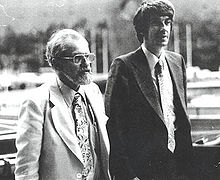 Nocturnal Lights (NL): Anomalous lights seen in the night sky.
Nocturnal Lights (NL): Anomalous lights seen in the night sky.
Daylight Discs (DD): Any anomalous object, generally but not necessarily “discoidal”, seen in the distant daytime sky.
Radar/Visual cases (RV): Objects seen simultaneously by eye and on radar.
Hynek also defined three close encounter (CE) subcategories:
CE1: Strange objects seen nearby but without physical interaction with the environment.
CE2: A CE1 case that leaves physical evidence, e.g. soil depressions, vegetation damage, radiations or causes electromagnetic interference.
CE3: CE1 or CE2 cases where occupants or entities are seen.
Later, Hynek introduced a fourth category, CE4, which is used to describe cases where the witness feels he was abducted by a UFO. Some ufologists have adopted a fifth category, CE5, which involves conscious human-initiated contact with extraterrestrial intelligence.
Vallée system
Jacques Vallée has devised a UFO classification system, where the UFO sightings of four different categories are divided into five subcategories:
Close Encounter (CE): As per Hynek.
Maneuver (MA): Trajectory discontinuity in flight.
Fly-by (FB): No observed discontinuity in flight.
Anomaly (AN): Unusual lights or unexplained entities.
The five subcategories can apply to all previous categories of sightings:
Sighting:
Physical effects: for example, radar sighting
Life form or living entity
Reality transformation: witnesses experienced a transformation of their sense of reality (often corresponding to the popular characterization of the incident as an abduction)
Physiological impact: Such as death or serious injury
Thus, the Vallée categorization categorizes cases as MA-2, AN-1, CE-4, for example.
Studies, panels, and conferences:
Project Identification (US, 1973–1980)
In 1973, a wave of UFO sightings in southeast Missouri prompted Harley D. Rutledge, physics professor at the University
of Missouri, to conduct an extensive field investigation of the phenomenon. The findings were published in the book Project Identification: the first scientific field study of UFO phenomena. Although taking a specific interest in describing unidentified aerial phenomena, as opposed to identifying them, the book references the presumed intelligence of the sighted objects. Rutledge’s study results were not published in any peer-reviewed journal or other scientific venue or format.
Studies by GEPAN, SERPA & GEIPAN (France, 1977–present)
 In 1977, the French Space Agency CNES Director General set up a unit to record UFO sighting reports. The unit was initially known as Groupe d’Etudes des Phénomènes Aérospatiaux Non identifiés (GEPAN), changed in 1988 to Service d’expertise de rentrée atmosphérique Phenom (SERPA) and in 2005 to Groupe d’études et d’informations sur les phénomènes aérospatiaux non identifiés (GEIPAN).
In 1977, the French Space Agency CNES Director General set up a unit to record UFO sighting reports. The unit was initially known as Groupe d’Etudes des Phénomènes Aérospatiaux Non identifiés (GEPAN), changed in 1988 to Service d’expertise de rentrée atmosphérique Phenom (SERPA) and in 2005 to Groupe d’études et d’informations sur les phénomènes aérospatiaux non identifiés (GEIPAN).
GEIPAN found a mundane explanation for the vast majority of recorded cases, but in 2007, after 30 years of investigation, 1,600 cases, approximately 28% of total cases, remained unexplained “despite precise witness accounts and good-quality evidence recovered from the scene” and are categorized as “Type D”. In April 2010, GEIPAN statistics stated that 23% of all cases were of Type D. However, Jean-Jacques Velasco, the head of SEPRA from 1983 to 2004, wrote a book in 2004 noting that 13.5% of the 5,800 cases studied by SEPRA were dismissed without any rational explanation, and stated that UFOs are extraterrestrial in origin.
United Nations (1977–1979)
Thanks to the lobbying of Eric Gairy, the Prime Minister of Grenada, the United Nations General Assembly addressed the UFO issue in the late 1970s. On July 14, 1978, a panel, with Gordon Cooper, J. Allen Hynek, and Jacques Vallée among its members, held a hearing to inform the UN Secretary General Kurt Waldheim about the matter. As a consequence of this meeting, the UN adopted decisions A/DEC/32/424 and A/DEC/33/426, which called for the “establishment of an agency or a department of the United Nations for undertaking, co-ordinating and disseminating the results of research into unidentified flying objects and related phenomena”.
 Project Hessdalen / Project EMBLA (Norway, 1983–present / Italy 1999–2004)
Project Hessdalen / Project EMBLA (Norway, 1983–present / Italy 1999–2004)
Since 1981, in an area near Hessdalen in Norway, unidentified flying objects have been commonly observed. This so-called
Hessdalen phenomenon has twice been the subject of scientific field studies: Project Hessdalen (1983–1985, 1995–) secured technical assistance from the Norwegian Defense Research Establishment, the University of Oslo, and the University of Bergen, while Project EMBLA (1999–2004) was a team of Italian scientists led by Ph.D. Massimo Teodorani from the Istituto di Radioastronomia di Bologna.
Both studies confirmed the presence of the phenomenon and were able to record it with cameras and various technical equipment such as radar, laser, and infrared. The origin and nature of the lights remains unclear. Researchers from Project EMBLA speculated the possibility that atmospheric plasma had been the origin of the phenomenon.
Project Condign (UK, 1996–2000)
The British Ministry of Defence (MoD) published in 2006 the “Scientific & Technical Memorandum 55/2/00a” of a four-volume, 460-page report entitled Unidentified Aerial Phenomena in the UK Air Defence Region, based on a study by DI55 (a section of the Directorate of Scientific and Technical Intelligence of the Defence Intelligence Staff) codenamed Project Condign. It discusses the British UFO reports received between 1959 and 1997.
The report affirms that UFOs are an existing phenomenon, but points out that they present no threat to national defense. The report further states that there is no evidence that UFO sightings are caused by incursions of intelligent origin, or that any UFO consists of solid objects which might create a collision hazard. Although the study admits to being unable to explain all analyzed UFO sightings with certainty, it recommends that section DI55 ceases monitoring UFO reports, as they do not provide information useful for Defence Intelligence. The report concludes that a small percentage of sightings that can not be easily explained are caused by atmospheric plasma phenomenon similar to ball lightning; Magnetic and other energy fields produced by these “buoyant plasma formations” are responsible for the appearance of so-called “Black Triangles” as well as having hallucinogenic effects on the human mind, inducing experiences of Close Encounters.
Sturrock Panel Report (US, 1997)
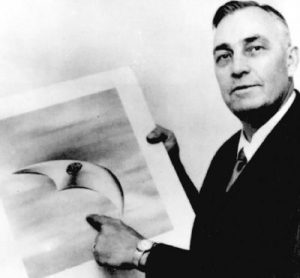 From Sept. 29 to Oct. 4, 1997 a workshop examining selected UFO incidents took place in Tarrytown, New York. The meeting was initiated by Peter A. Sturrock, who had reviewed the Condon report and found it dissatisfying. The international review panel consisted of nine physical scientists, who responded to eight investigators of UFO reports, who were asked to present their strongest data. The final report of the workshop was published under the title “Physical Evidence Related to UFO Reports” in the Journal of Scientific Exploration in 1998. The study concluded that the studied cases presented no unequivocal evidence for the presence of unknown physical phenomena or for extraterrestrial intelligence, but argued that a continued study of UFO cases might be scientifically valuable.
From Sept. 29 to Oct. 4, 1997 a workshop examining selected UFO incidents took place in Tarrytown, New York. The meeting was initiated by Peter A. Sturrock, who had reviewed the Condon report and found it dissatisfying. The international review panel consisted of nine physical scientists, who responded to eight investigators of UFO reports, who were asked to present their strongest data. The final report of the workshop was published under the title “Physical Evidence Related to UFO Reports” in the Journal of Scientific Exploration in 1998. The study concluded that the studied cases presented no unequivocal evidence for the presence of unknown physical phenomena or for extraterrestrial intelligence, but argued that a continued study of UFO cases might be scientifically valuable.
COMETA Report (France, 1999)
COMETA (Comité d’Études Approfondies, “Committee for in-depth studies”) is a private French group, which is mainly composed of high-ranking individuals from the French Ministry of Defence. In 1999 the group published a ninety-page report entitled “Les OVNI et la défense: à quoi doit-on se préparer?” (“UFOs and Defense: What Should We Prepare For?”). The report analyzed various UFO cases and concluded that UFOs are real, complex flying objects, and that the extraterrestrial hypothesis has a high probability of being the correct explanation for the UFO phenomenon. The study recommended that the French government should adjust to the reality of the phenomenon and conduct further research. Skeptic Claude Maugé criticized COMETA for research incompetency, and claimed that the report tried to present itself as an official French document, when in fact it was published by a private group.
“Disclosure Project” Press Conference (US, 2001) Steven M. Greer
 On May 9, 2001, twenty government workers from military and civilian organizations spoke about their experiences
On May 9, 2001, twenty government workers from military and civilian organizations spoke about their experiences
regarding UFOs and UFO confidentiality at the National Press Club in Washington D.C.. The press conference was initiated by Steven M. Greer, founder of the Disclosure Project, which has the goal of disclosing alleged government UFO secrecy. The purpose of the press conference was to build public pressure through the media to obtain a hearing before the United States Congress on the issue. Although major American media outlets reported on the conference, the interest quickly died down, and no hearing came forth.
Fife Symington Press Conference (US, 2007)
On November 12, 2007, a press conference, moderated by former Governor of Arizona Fife Symington, was held at the National Press Club in Washington D.C. Nineteen former pilots and military and civilian officials spoke about their experiences with UFOs, demanding that the U.S. government engage in a new investigation of the phenomenon.
UFO organizations
United States
In the US, groups and affiliates interested in UFO investigation number in the hundreds, of which a few have achieved prominence based on their longevity, size, and researcher involvement with scientific credentials. The first significant UFO interest group in the US was the Aerial Phenomena Research Organization (APRO), formed in 1952 by Coral and James Lorenzen. The organization closed down in 1988. The National Investigations Committee on Aerial Phenomena (NICAP), which formed in 1957 and shut down in the 1970s, whose Board of Directors included former Director of Central Intelligence and first head of the Central Intelligence Agency, VADM Roscoe H. Hillenkoetter, was, at one time, the largest UFO organization in the country, with numerous chapters. In 1957, brothers W. H. and J. A. Spaulding founded the Ground Saucer Watch, which later became famous when, in 1977, the group filed a suit under the Freedom of Information Act against the CIA.
 The two major UFO investigative groups active today are the Mutual UFO Network (MUFON), founded in 1969, and the Center for UFO Studies (CUFOS), founded in 1973 by J. Allen Hynek. MUFON grew as the key members of NICAP joined the organization in the 1970s. CUFOS has tried to limit its membership to established researchers, but has found little academic acceptance. National UFO Reporting Center takes UFO reports, and has been in operation since 1974.
The two major UFO investigative groups active today are the Mutual UFO Network (MUFON), founded in 1969, and the Center for UFO Studies (CUFOS), founded in 1973 by J. Allen Hynek. MUFON grew as the key members of NICAP joined the organization in the 1970s. CUFOS has tried to limit its membership to established researchers, but has found little academic acceptance. National UFO Reporting Center takes UFO reports, and has been in operation since 1974.
United Kingdom
The British UFO Research Association (BUFORA) is the oldest of the active British UFO organizations. It traces its roots to the London UFO Research Association, founded in 1959, which merged with the British UFO Association (BUFOA) to form BUFORA in 1964.
Australia
 The Australian Flying Saucer Bureau (AFSB) and the Australian Flying Saucer Research Society (AFSRS) were the earliest UFO groups established in Australia, with both being founded in the early 1950s. The Australian Centre for UFO Studies (ACUFOS) was established in 1974 with links to the American CUFOS.[120] Other currently active Australian UFO groups include the Victorian UFO Research Society (VUFORS), the Australian UFO Research Network (AUFORN), and UFO Research Queensland (UFORQ).
The Australian Flying Saucer Bureau (AFSB) and the Australian Flying Saucer Research Society (AFSRS) were the earliest UFO groups established in Australia, with both being founded in the early 1950s. The Australian Centre for UFO Studies (ACUFOS) was established in 1974 with links to the American CUFOS.[120] Other currently active Australian UFO groups include the Victorian UFO Research Society (VUFORS), the Australian UFO Research Network (AUFORN), and UFO Research Queensland (UFORQ).
Switzerland
The Freie Interessengemeinschaft für Grenz- und Geisteswissenschaften und Ufologiestudien (Free Community of Interests for the Border and Spiritual Sciences and Ufological Studies) (FIGU) is a non-profit, tax-paying organization established under the name mentioned. This organization was established by Eduard Albert Meier (Billy Meier) in 1996 with its headquarters based in Schmidrüti, Switzerland. Eduard Albert Meier (born February 3, 1937) is a Swiss citizen who is the source of many photographs of alleged unidentified flying objects (UFOs), which he presents in support of his claim that he is in contact with extraterrestrial beings.
More About The Paranormal
Features
Copyright © 2018 SEAN-O-VISTA

Powered with 

